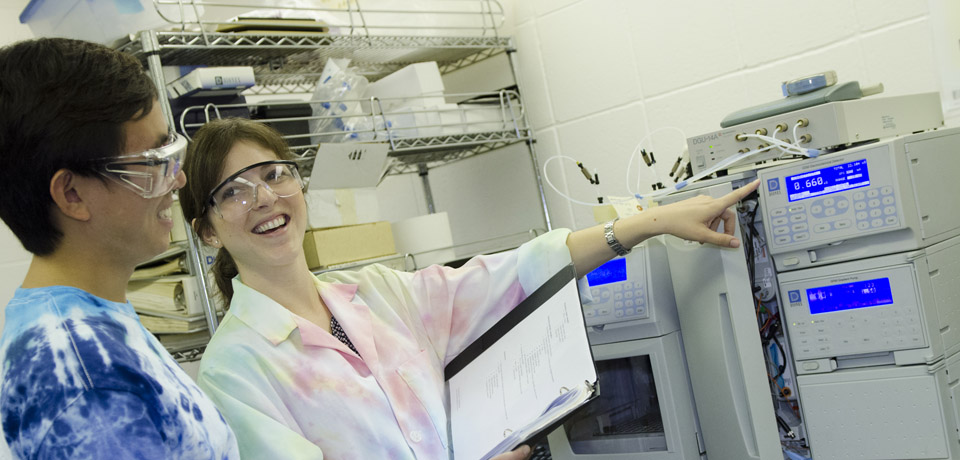Seeing Through the Smog
July 29, 2014
Student researchers in Professor Lelia Hawkins’ lab tackle tough atmospheric chemistry questions, exploring how air pollution impacts climate change. They collect smog particles from a rooftop sampling inlet and measure organic carbon and optical properties. They also generate mimics for smog particles to determine how light and oxidants impact those same properties as particles pass in and out of clouds and fog.
In addition to taking bulk measurements, student researchers are able to examine individual pollution particles and mimics with a super-high-resolution atomic force microscope. Studying how the shape and stiffness of the particles change helps them understand how quickly the particles interact with clouds and fog as well as with oxidants. Some students work directly with fog water to measure carbon and light absorption. Because the weather doesn’t always cooperate, Hawkins’ lab has recruited engineering students to construct a fog chamber, allowing them to simulate fog on real, ambient particles.
Hawkins’ lab students also collaborate with large research universities. In many cases, their efforts will result in published papers with Harvey Mudd students as the first author. Collaborations include:
• Lydia Jahl ’14 spent eight weeks in northern Italy studying polluted fog water.
• Amanda Lemire ’15 is joining a UC San Diego research group at the Lawrence Berkeley National Laboratory for synchroton microscopy analysis.
• Madeline Hartley ’16 helped with the analysis of biomass smoke samples from UC Riverside.
“Students are entirely responsible for the success of their projects and often present their research at national meetings,” says Hawkins, the Barbara Stokes Dewey Assistant Professor of Chemistry. “Because Harvey Mudd students are given a great deal of independence in their projects, they exude confidence during their conference presentations. Graduate schools often recruit our students into their programs and comment on their excellent oral and written communication skills.”
